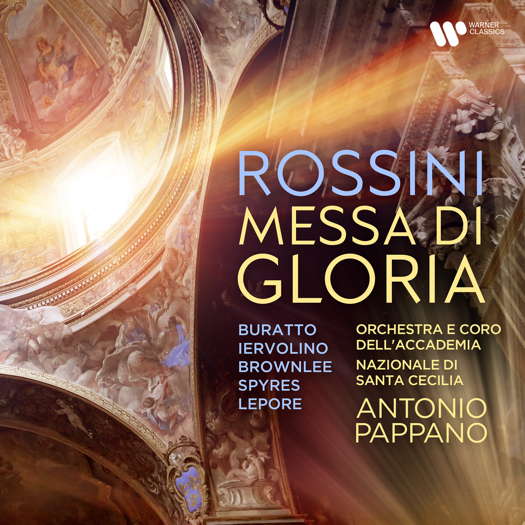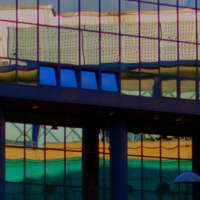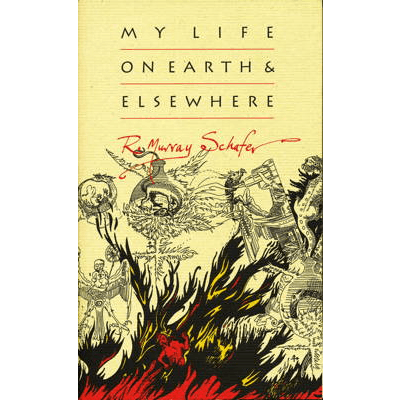- Antonio Membrado
- Giovanni Martini
- Malcolm Singer
- Langlais
- Edinburgh International Festival
- Eleanor Chan
- Benjamin Shwartz
- Malcolm Goldring: The Infant King

A Touch of Immortality
GERALD FENECH listens to Rossini's 'Messa di Gloria'
'... heartwarming performances full of glowing fervour and devotional ardour.'
Gioachino Rossini (1792-1868) was a boy prodigy. Indeed, in November 1810 he staged his first opera, La Cambiale di Matrimonio, at the small Teatro San Moise. He was just eighteen years old. By 1815 the composer had produced nine other stage works, which alternated between the comic and the serious. By then, Rossini's fame as an outstanding opera composer was already on firm ground, so it was no surprise when in May of that year the composer was invited to take up the post of director of music for the royal theatres in Naples. These included the Teatro San Carlo, the city's leading opera house; its manager Domenico Barbaia was to have an important influence in Rossini's career there. The musical establishment of Naples was at first very unwelcoming, as Rossini was seen as an intruder into its cherished operatic traditions, but Elisabetta, Regina d'Inghilterra soon won them over, and consequently Rossini's position in Naples was assured.
Between 1815 and 1822 he composed eighteen more operas, nine for Naples and nine for other opera houses in other cities. Otello, Mose' in Egitto and La Donna del Lago for the former and La Gazza Ladra and La Cenerentola for the latter readily come to mind, not to mention the 1816 perennial hit Il Barbiere di Siviglia for the Teatro Argentina in Rome. It was during this period in Naples that Rossini composed his Messa di Gloria. Written for the Arciconfraternita di San Luigi, this nine-movement Mass was first performed on 24 March 1820 in the Chiesa di San Fernando. It is in the traditional form of a Gloria Mass, that is a setting of only the first two prayers of the Catholic Mass, the 'Kyrie' and 'Gloria'.
This piece was the only major composition of sacred music written while Rossini was still an active opera composer. His other two forays in the genre, the Petite Messe Solennelle (1863) and the Stabat Mater (1842), came much later in Rossini's life.
The 'Kyrie' is divided into three parts, the first a dotted-rhythm 'Kyrie eleison' for chorus in E flat minor, the second a more lyrical E flat 'Christe eleison' for two tenors with the first minor-key section closing out this first part.
Listen — Rossini: Kyrie Eleison (Messa di Gloria)
(5054197234545 track 3, 2:15-3:12) ℗ 2022 Parlophone Records Limited :
The 'Gloria' is the largest section of the Mass, and is split into operatic style numbers, soprano soloists alternating with tenors, basses etc.
Listen — Rossini: Domine Deus (Messa di Gloria)
(5054197234545 track 7, 5:15-5:58) ℗ 2022 Parlophone Records Limited :
The high point emotionally comes at the 'Qui tollis', which begins with a slow section for chorus and tenor then concludes with a brilliant 'cabaletta' ('Qui sedes'), showing off the extreme upper range of the tenor.
Listen — Rossini: Qui sedes ad dexteram Patris (Messa di Gloria)
(5054197234545 track 9, 1:58-2:53) ℗ 2022 Parlophone Records Limited :
Contemporary critics were at odds with Rossini, accusing him of inserting discarded operatic sections from his previous operas into a work that had nothing to do with the mundane. Maybe they were right, but who cares when one is confronted with such beauty that lifts the heart and mind towards the realms of joy and light that every human yearns for but only a few are able to reach.
Rossini was an amiable and humble artist, and was never afraid to ask for help when he felt it was necessary. Indeed, the concluding number of the Mass, a four-part double fugue setting of 'Cum Sancto Spiritu', was composed with the help of another Italian composer more versed in counterpoint, Pietro Raimondi.
This Messa di Gloria does not enjoy the popularity of the other two works cited earlier, but the music is no less 'glorious'. Indeed, this is a work that testifies to a composer of extraordinary talent, astonishing melodic inspiration and audacious harmonic invention, not to mention the emotional intensity and sparkling colours that leap out of every page of this early creation.
Antonio Pappano's peerless conducting makes the music flow with a sublimity that sweeps you off your feet, and his team of singers and players responds with heartwarming performances full of glowing fervour and devotional ardour.
This is what Pappano has to say on this celestial composition:
The 'Messa di Gloria' is a mass of light. Rossini always connected vividly to his audience in his inimitable way. The soloists need to sing with great spiritual intensity and also powerful confidence as they convey the fearlessness of the composer's relationship to God. The work is a celebration praising God's glory ... Rossini is just open eyes, open face and open arms to God.
This statement just says it all. Experience a touch of immortality in a corruptible world. Sound and presentation are first-rate.
Copyright © 21 October 2022
Gerald Fenech,
Gzira, Malta

CD INFORMATION - ROSSINI: MESSA DI GLORIA




